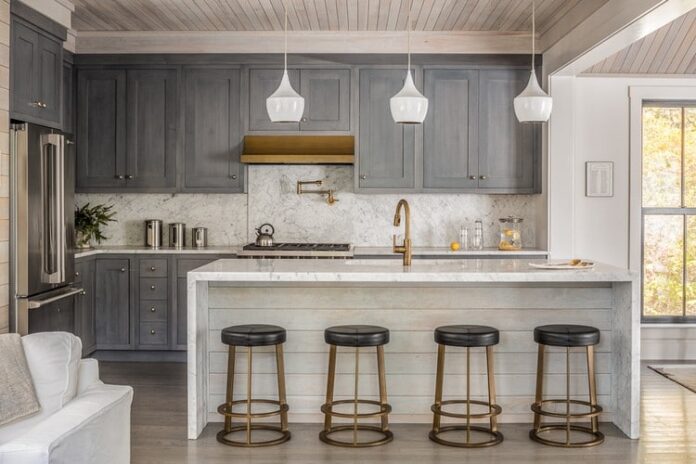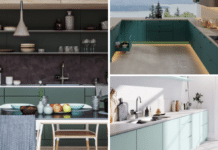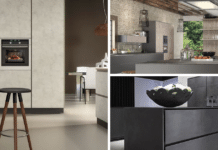Feng Shui exists all around us, even in our home kitchen. It is an ancient Chinese art focused on harmonizing people with their environment. It focuses on balancing elements and allowing Qi to flow to better their wealth, health, and happiness.
While a few aspects seem rooted in superstition, some of their kitchen design recommendations for better Qi make logical sense.
Best Tips to Improve Kitchen Feng Shui
When investigating these tips, we’ll examine why the Feng Shui philosophy states that certain aspects are not harmonious. We will also explain why these tips work very well for kitchen design in your own home. Here are some tips to improve kitchen Feng Shui.
1. Do not face the stove to align with the kitchen door
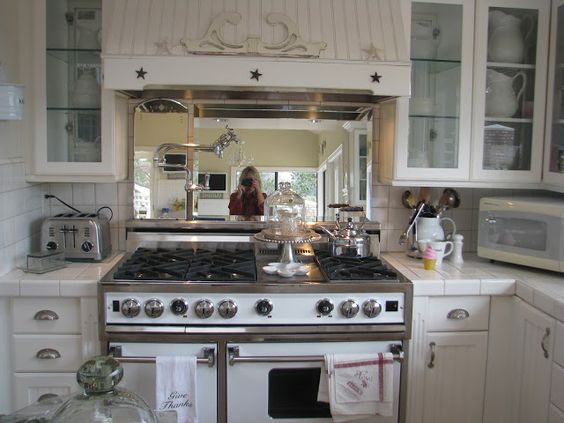 photo: White Ironstone Cottage
photo: White Ironstone CottageFeng Shui reasoning: The door aligned with the stove leads to a bad temper and money loss. The stove is an item of wealth and a direct path to the door, which means money will easily leave.
Kitchen design reasoning: If you are cooking on the stove, you don’t want to be surprised by the door traffic behind you. People coming in and out of the door are distracting. Thus, it is bad if you are cooking with something hot.
Solution: If you place a mirror behind the stove, it will reflect the bad feng shui of this placement. Also, you are less likely to be surprised when the door opens behind you while working with hot food.
A better solution is to move the stove out of the direct path to the door.
2. Extend your wall cabinets to the ceiling
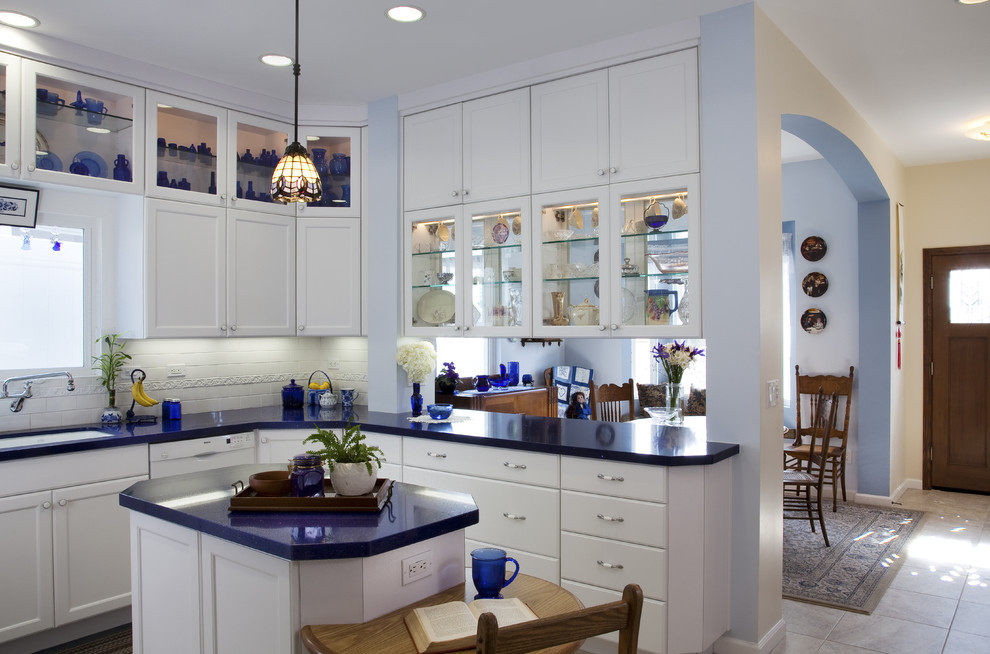
Feng Shui reasoning: Negative qi, along with dust, will get trapped there, reducing the effectiveness of the positive Qi.
Kitchen design reasoning: Dust will collect on the tops of the wall cabinets, making that surface difficult to clean. If you are sensitive to dust allergens, this will be problematic.
Solution: A feng shui solution would be to put plants or décor there to keep the bad Qi from collecting.
The kitchen design solution would depend on the size of the gap. Crown molding or a small panel can be added to the top of a wall cabinet to bridge that space. Otherwise, a full upgrade of new wall cabinets that extend to the ceiling creates new storage space.
3. Do not put the stove next to the sink
Feng Shui reasoning: Sink represents the element of water, and the stove represents the element of fire. Putting water and fire next to each other will cause conflicts in the kitchen and the home. Therefore, the incompatibility of these elements can cause unnecessary arguments, losing money, and sickness.
Kitchen design reasoning: The sink, the stove, and the refrigerator are the most important elements of the kitchen. Designers follow the “golden triangle rule” of the kitchen, which requires a clear workflow path between these appliances. Putting the sink next to the stove makes movement inconvenient, especially if two people use it simultaneously.
In the worst-case scenario, you don’t want a malfunctioning sink next to a stove that will affect it or vice versa.
Solution: The feng shui solution is to put a plant between the water element and fire element to neutralize the conflict. The rationale is that water creates wood (plant) and wood fuels into the fire and creates a “productive cycle.”
The kitchen design solution is never to put these appliances next to each other, especially if remodeling the kitchen. If put on the same wall, the recommendation is to keep them at least three feet away from each other. If two people are at the sink and stove at the same time, they won’t interfere with each other’s work.
4. Avoid painting the kitchen red
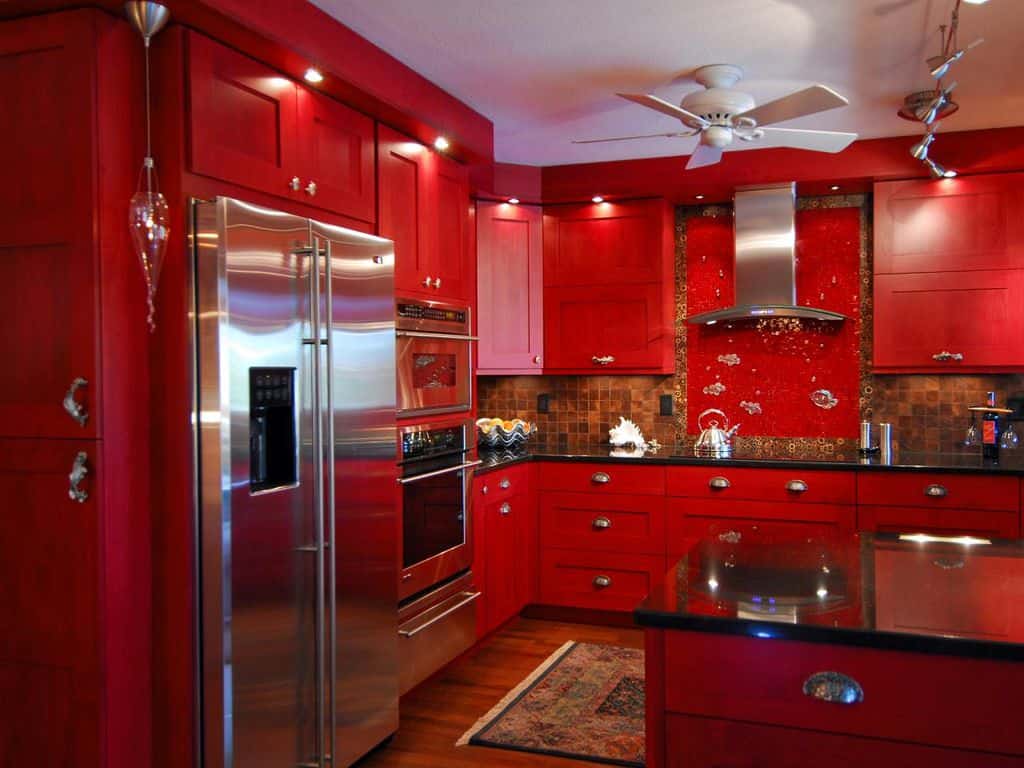 photo: Home Stratosphere
photo: Home StratosphereFeng Shui reasoning: Red and orange are colors of fire, and they will unbalance the stove’s fire element. Too much fire creates too much energy, which leads to moodiness, irritability, and, therefore, a more argumentative kitchen.
Kitchen design reasoning: While not exactly addressing the color red, red kitchens are often darker in tone. It’s more pleasant to be in a lighter-toned kitchen, which brings some brightness into the room. A lighter kitchen will look more spacious and reflect more lighting sources in the room.
Solution: Feng Shui recommends more muted tones and brighter shades for the kitchen. If you look up recommended kitchens, you will see more light yellows, greens, whites, and browns for the overall room. This does not limit any accents or accessories in other colors.
The kitchen design solution lets the owner choose the colors that make you happy; it’s your kitchen! Just be aware that lighter hues will make your kitchen brighter and lots of lighting is recommended. However, if you change your mind, you can repaint the walls or cabinets for a new look!
5. Avoid using the magnetic strips to hold knives
 photo: Gadget Flow
photo: Gadget FlowFeng shui reasoning: Having exposed knives with sharp edges brings negative Qi. Or at least serves as a reminder or unpleasant thought caused by exposed knives that can lead to discomfort from guests.
Kitchen design reasoning: Avoid Easy access to sharp objects if you have children or pets.
Solution: Different feng shui practitioners have differing opinions on how to store these knives. Moni from “Nine Steps to Feng Shui” suggests that storing knives even in a wooden block brings bad qi. Ken Lauher, an active feng shui practitioner, recommends placing a butcher block for the knives close to the food preparation area, which will be fine.
In either case, another practical solution is to store kitchen knives in a drawer in your base cabinet. If you have children, this drawer can be childproofed with a lock. Overall, specialized drawers with organizers are available for your kitchen.
6. Store garbage away, including hiding your trash cans
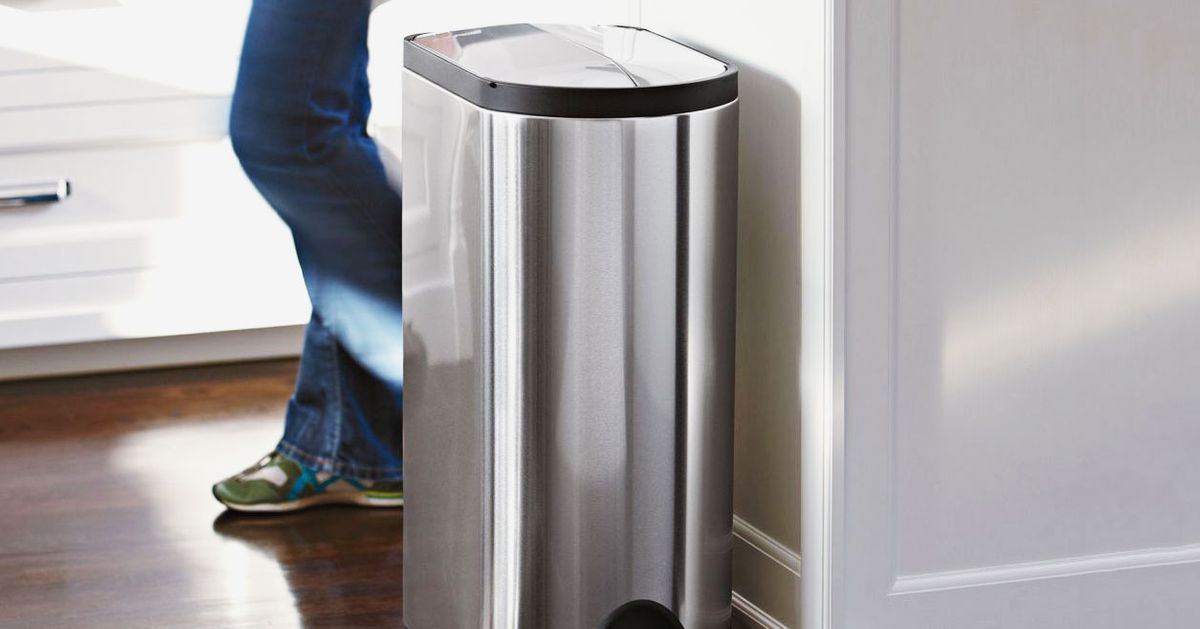 photo: The Strategist
photo: The StrategistFeng shui reasoning: Having the kitchen disposal bin visible is connected to clutter. Even though it is a place to throw things away, the wastebasket perpetuates negative qi in your kitchen.
Kitchen design reasoning: Given how much food is eaten or what food prep creates, it is nearly impossible to have a kitchen without a trash basket. However, if you spend much money on a kitchen remodel, having an ugly wastebasket unintentionally becomes the focus. Ideally, you want to incorporate how you handle trash into your kitchen design rather than treat it as an afterthought.
Solution: Feng shui advises completely putting trash in another room, like the pantry or outside, to keep that negative energy out. However, depending on the size of the room, this can be impractical enough not to practice. You can at least have lids on your trash cans so you do not need to see the clutter.
If you want to incorporate this into your kitchen, pull-out trash cabinets can be part of your design. These can be found online as “kitchen cabinet bins” or “waste sorting for cabinets.”
7. No aligning door paths from the bathroom to the kitchen
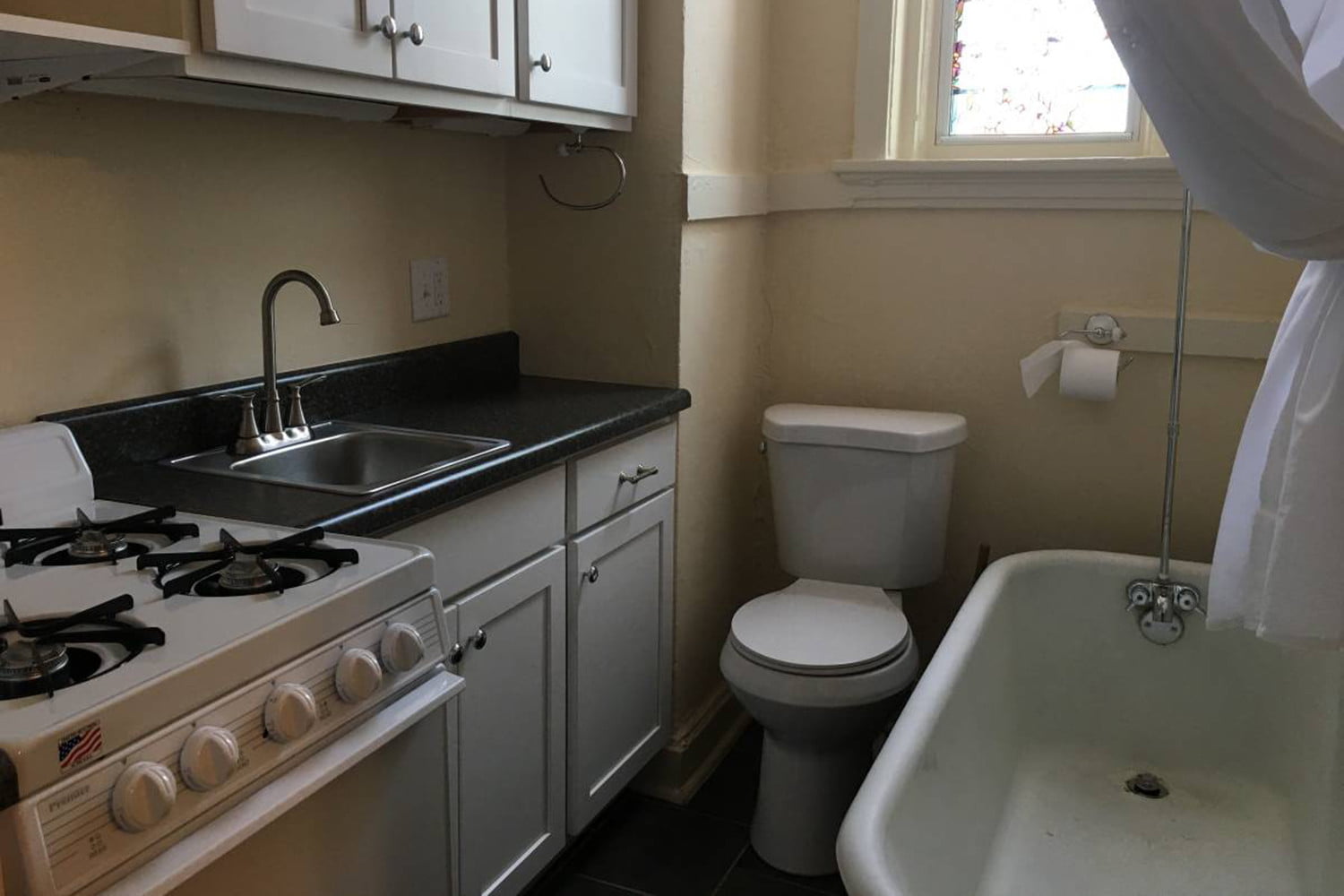 photo: Digital Trends
photo: Digital TrendsFeng shui reasoning: Having a direct line between the kitchen and the bathroom is a clash between a fire (kitchen) and water (bathroom). This is also bad for digestion when negative qi circulates from the bathroom to the kitchen.
Several feng shui matters relate to the relationship between the bathroom and the kitchen. These include not having a second-floor toilet directly above the stove or having the stove share the same wall as the bathroom.
Kitchen design reasoning: It’s common sense not to have the smells from the kitchen and the bathroom intermingle. Nothing is more unappetizing for someone to use the bathroom before, during, or after food preparation and hearing those sounds.
Solution: If at all possible, avoid this scenario in home design, as it is nearly impossible to fix. But the feng shui solution is that curtains over the door will help block that bad energy.

